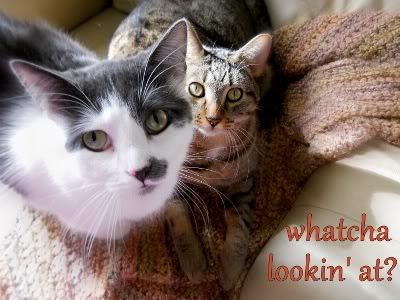K&L The virus can be shed for many months after the initial symptoms subside. Seeing as no others in the house have been sick in any way, I'm suspecting the mother is the carrier an infected her kittens. This is not the common calici virus that many of us have dealt with but a mutated form that's relatively new to the East Coast. If you type felinecalici virus into a search engine, there's quite a few atricles addressing this form of the virus. To my knowledge the FVRCP vaccines don't do a thing to ward off this awful virus. I posted this a while back...
HIGHLY VIRULENT FELINE CALICIVIRUS INFECTION
New outbreaks of a novel, highly virulent strain of feline calicivirus (FCV) have been reported in the northeastern United States. Kittens and adult cats that are infected show signs of subcutaneous swelling and edema of the face, pinnae and/or distal extremities; and ulceration and necrosis of skin in affected areas in more chronic cases. Other less consistent signs include rhinitis and conjunctivitis of variable severity, anorexia and death.
This outbreak shares features of the 1998-1999 epizootic of FCV in cats in California. Mortality in the California outbreak was reported to be 33-50% in field study cats. Multiple cases arose from cat-to-cat and fomite transmission after introduction of an affected cat into shelters, clinics or catteries. The preferred disinfectant is a 1:32 dilution of sodium hypochlorite (household bleach). Currently available FCV vaccines appear minimally effective in preventing disease by this novel, virulent isolate.
Here's another link..
http://www.vetmed.ucdavis.edu/CCAH/P...CUpdate8-5.pdf








 Reply With Quote
Reply With Quote I know necrosis isn't conatgious, guess I should edit that post for more clarity huh? I've had all the kittens on clavamox, antirobe (to kill anaerobic bacteria) and an appetite stimulant. The boys are fine now, but Emily maybe should see the vet one more time before I make a descision I don't want to make. Her feet are swelled up there doesn't seem to be any sensation in her toes when I pinch them. She is able to stand up, but prefers lying down. She is still eating, but not very well.
I know necrosis isn't conatgious, guess I should edit that post for more clarity huh? I've had all the kittens on clavamox, antirobe (to kill anaerobic bacteria) and an appetite stimulant. The boys are fine now, but Emily maybe should see the vet one more time before I make a descision I don't want to make. Her feet are swelled up there doesn't seem to be any sensation in her toes when I pinch them. She is able to stand up, but prefers lying down. She is still eating, but not very well.



 I'LL BE HAPPY FOR HER SAKE... AND SAD FOR YOU (((QSA))) I KNOW YOU TRIED TO HELP HER
I'LL BE HAPPY FOR HER SAKE... AND SAD FOR YOU (((QSA))) I KNOW YOU TRIED TO HELP HER
Bookmarks